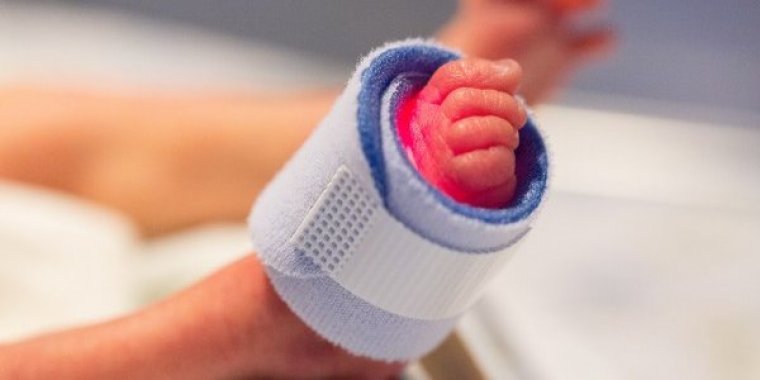| News / Science News |
Babies in neonatal intensive care units are exposed to harmful chemical substances found in plastic
A multidisciplinary team of scientists from Granada has warned for the first time of the presence of bisphenol A (BPA) and parabens (PBs) in a wide range of plastic medical devices, fabrics, personal care products (including topical creams), and nutritional supplements in hospital neonatal intensive care units (NICUs), coming into direct contact with new-born babies.

For this study, the researchers analysed over 50 items that come into direct contact with babies born with a very low birth weight, during their stay in hospital. Photo: SeppH/pixabay.com
Among the items analysed in the study were plastic syringes and tubes for the intravenous administration of fluids or parenteral nutrition; plastic nasogastric and enteral feeding tubes; oxygen masks and endotracheal tubes; and a wide range of cardiopulmonary bypass circuits, dressings, bandages, and electrodes.
Other specific baby products were also analysed, such as personal care products, certain fabrics, nappy-changing mats, and mattress protectors.
The study found that 60% of the objects or products sampled contained BPA, while PBs were found in 80% of the items.
The highest BPA content was detected in the three-way stopcock (over 7,000ng/g), followed by the patterned transparent film dressing (surgical tape), the gastro-duodenal feeding tube, sterile gloves for professional use, the umbilical catheter, and the intravenous infusion extension kit (with BPA concentrations ranging between 100 and 700ng/g).
The researchers also observed high concentrations of PBs (greater than 100ng/g) in several items, such as the protective eye covers used when administering phototherapy to the baby, the aforementioned patterned transparent film dressings (surgical tape), intravenous catheters, and the intravenous infusion extension kit.
When they analysed the hormonal activity of the samples taken from the selected materials, based on oestrogenicity and anti-androgenicity assays, the items presenting the most hormonal activity were the dummy, the three-way stopcock, and the patterned transparent film dressing.
Nicolás Olea, Professor of Radiology and Physical Medicine at the UGR and a doctor at the San Cecilio Hospital, is the main author of this study. “New-born babies with low birth weight,” he explains, “require the complex care of the NICU setting, which endeavours to simulate uterine conditions until the baby’s immature skin begins to develop correctly and their gastrointestinal, immune, nervous, and respiratory systems start to function properly.”
In this hospital environment, such babies are subjected to multiple techniques and procedures that involve the use of medical instruments and devices that come into direct contact with their bodies, many of which are made of polycarbonate plastic, epoxy resins, or PVC. Substances such as BPA form part of the structure of these materials or have been added to improve the characteristics of the product.
“In addition, parabens are used as components of some plastics as preservatives or antimicrobial agents. They are also used in cosmetics and other consumer goods. Both BPA and PBs can be released when these materials are used, either due to wear of the plastic polymer or by being exposed to the very pH and temperature conditions that foster their release,” warns the UGR Professor.
To date, only two other studies have addressed the exposure of new-born babies in the NICU environment to these chemical compounds, and both identified an increase in BPA concentrations in the urine of the babies that was linked to a higher frequency and intensity of the use of these medical devices. Values up to 30 times higher than those found among the general population were reached. (University of Granada)
YOU MAY ALSO LIKE





